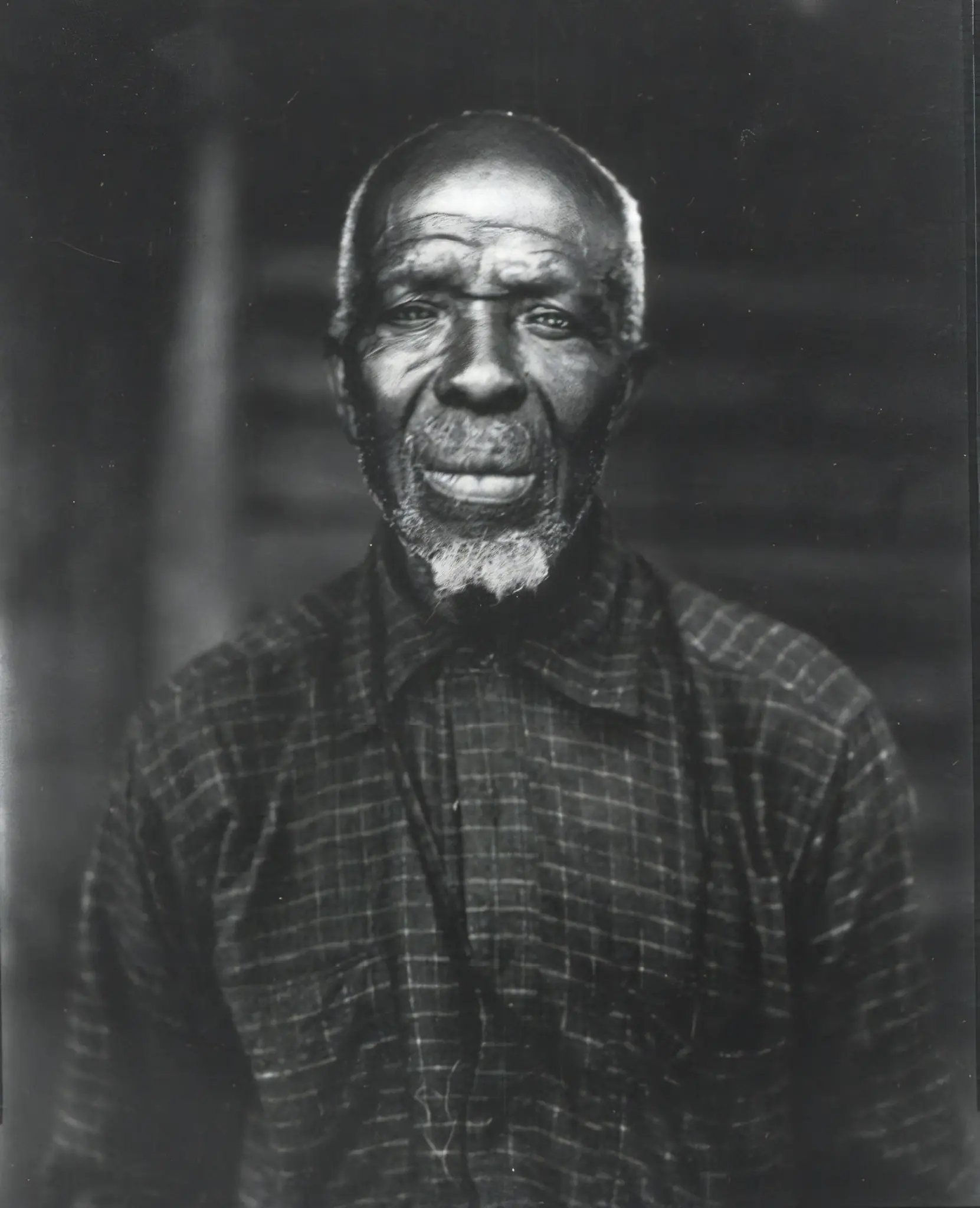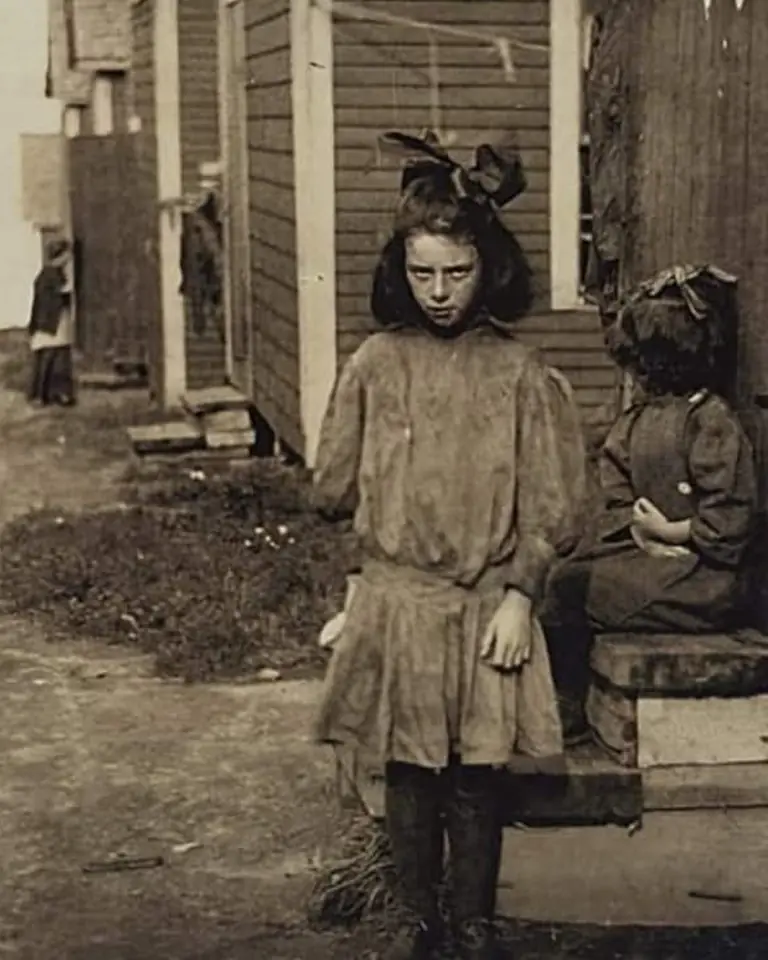
Africatown: Cudjo Lewis’ Legacy of Resilience from the Last Sl@ve Ship Clotilda
Cudjo Lewis built Africatown from the Clotilda’s legacy, a symbol of resilience. Discover its history! ❤️⛓️

In the sweltering summer of 1911, while many children enjoyed the carefree days of chasing kites and catching fireflies, a different reality unfolded for Nan de Gallant. At just nine years old, her hands, still small and developing, were already seasoned in the relentless rhythm of industrial labor. Each morning, long before dawn broke over the tranquil waters, Nan would rise. Her destination: Seacoast Canning Co., Factory #2, located at 4 Clark Street in Eastport, Maine.
Her task was that of a cartoner – a grueling, repetitive job. With a precision born of necessity, her tiny fingers worked tirelessly, sealing tin after tin of fish. The air inside the cannery was thick with the heavy scent of brine and raw seafood, punctuated by the incessant clang of tin lids. Sometimes, she worked side by side with her mother, their silent efforts a shared burden. Other times, she toiled alone, her small frame dwarfed by the machinery, her childhood dreams buried beneath the metallic din and the endless rows of fish. The brine bit into her skin, leaving her fingers blistered and raw, a permanent mark of her daily sacrifice.
Nan was not alone in this relentless struggle. Her mother and two older sisters also worked at the factory, each contributing their meager wages to the family's survival. One sister was even recorded to have packed an entire box of "Arie Hasit" in a single, backbreaking day, a testament to the sheer physical demands placed upon them. The "rush season" was particularly brutal. Work commenced promptly at 7 a.m. and continued without respite until the clock struck midnight. There was no concept of overtime pay, no mercy from the clock – just bone-deep exhaustion and the unyielding imperative of survival. Meanwhile, her brother navigated the treacherous waters, earning his keep working on the fishing boats, completing the family's contribution to the arduous industry.
Originally hailing from Perry, Maine, the family undertook a seasonal migration to Eastport each summer, drawn by the slim promise of wages, no matter how small or fleeting. Their life was undeniably hard, marked by irregular work and constant uncertainty. Yet, day after day, they showed up, driven by the stark reality that they simply had no other choice. Their resilience was not a choice, but a necessity.
More than a century later, Nan's photograph continues to stare back at us. It captures her tiny, solemn face, smudged perhaps with the salt and steel of the cannery, or the grime of her harsh reality. Her gaze holds no anger, not even overt sadness. Instead, there's a quiet defiance, a haunting stillness that speaks volumes about a childhood that was never truly lived, a carefree innocence irrevocably stolen by the demands of labor. It's a poignant reminder of the countless children whose early years were defined by work, not play.
This photograph, a powerful piece of historical documentation, serves as a poignant testament to the human spirit's ability to endure hardship. It invites us to reflect on a past era of child labor, industrial exploitation, and the resilience of families pushed to their limits. Nan de Gallant's story, immortalized in that single image, speaks volumes about the silent sacrifices made by so many to build the world we know today.
Photo courtesy of Lewis Hine, a pioneering photographer who documented child labor in the early 20th century.

Cudjo Lewis built Africatown from the Clotilda’s legacy, a symbol of resilience. Discover its history! ❤️⛓️

Discover the heartwarming true story of a shelter cat with a "crooked face" deemed unadoptable, who found a loving home and became a radiant symbol that true beauty l!es beyond symmetry and that every animal deserves love.

A young girl’s childhood dream to become a cop comes true against all odds. Discover how she persevered through struggles to finally earn the rank of sergeant, honoring her five-year-old self.

I never imagined my son's wedding day would end with flashing lights and a runaway bride. When those men flashed their badges and called Lizzie's name, her face changed so fast it was like watching a mask slip.

My cousin claimed she was pregnant, but something didn’t add up. After uncovering the truth, I confronted her—and the sh0cking revelation changed everything. Read the dramatic story behind the l!e.

My husband’s last-minute demands pushed me to the bre@king point. I walked out, left him to deal with the cha0s, and taught him a lesson he’ll never forget.

My wife’s reckless spending spiraled us into financial ru!n. After years of bailing her out, I reached my breaking point. Read how I finally made the hardest decision of my life—divorcing her to save myself, even though I still loved her.

After inheriting $670K, my husband quit his job without warning, thinking we were set for life. But I had a lesson in store for him. Discover how I turned the tables and showed him the real cost of laziness and entitlement in marriage.

My boyfriend’s constant pressure to get me to go to the gym made me question our love. Read how our conflict over body image and fitness almost ruined our relationship and what we learned about true acceptance and love.

My MIL acted like my pregnancy belonged to her: she painted the nursery without asking, smoked stinky herbs to ‘ensure a boy,’ and bossed me around daily. But when I gave birth to a girl, her cruel reaction made me smile… Because I was ready.

My girlfriend quit her job to become a T!kT0ker, and I ended up working two jobs to support us. Read how social media dreams can destroy relationships and the heartbreaking consequences of love and sacrifice.

A tense family conflict forces Tina to confront her sister-in-law's cruelty and stand up for her place in her own family, leading to a powerful and emotional realization about love and belonging.

A woman faces emotional turmoil as her partner pressures her to change her appearance for the sake of his family's approval. In a world where self-love is key, she learns the hard way that true love starts with loving yourself.

After facing buIIy!ng for her unique style, a 6th-grade girl found her voice and confidence again through crochet. Discover this inspiring story of artistic triumph, self-expression, and how handmade passion can build an empire, one stitch at a time.

On June 12, a family’s dream of a new life in London ended tragically in a plane crash. Discover the emotional story of Pratik Joshi’s family, their dreams, and the reminder that life is fragile.

A heartfelt and emotional journey of love, heartbreak, and self-discovery. When your partner is still hung up on their ex, is it worth fighting for the relationship? Discover the painful truth behind choosing yourself over unrequited love.

A woman embarks on a journey to find out the truth behind mysterious flowers sent to her every year, only to uncover a love story that had been hidden for 20 years.

A wife discovers her husband's secret texts with a woman he met at a strip club. What seemed like innocent conversations quickly turns into an affair, and now she has to decide if she can ever trust him again.

When a woman discovers an abandoned child with a mysterious note, she’s thrust into a tangled web of secrets, betrayal, and an inheritance that changes everything. Dive into this captivating story of hidden truths and the love that saves a life.

A 26-year-old woman tragically d!ed after eating hotpot. Learn about the rare but life-thre@tening r!sks of eating spicy food and how to stay safe at the table.

Cudjo Lewis built Africatown from the Clotilda’s legacy, a symbol of resilience. Discover its history! ❤️⛓️

Discover the heartwarming true story of a shelter cat with a "crooked face" deemed unadoptable, who found a loving home and became a radiant symbol that true beauty l!es beyond symmetry and that every animal deserves love.

A young girl’s childhood dream to become a cop comes true against all odds. Discover how she persevered through struggles to finally earn the rank of sergeant, honoring her five-year-old self.

I never imagined my son's wedding day would end with flashing lights and a runaway bride. When those men flashed their badges and called Lizzie's name, her face changed so fast it was like watching a mask slip.

My cousin claimed she was pregnant, but something didn’t add up. After uncovering the truth, I confronted her—and the sh0cking revelation changed everything. Read the dramatic story behind the l!e.

My husband’s last-minute demands pushed me to the bre@king point. I walked out, left him to deal with the cha0s, and taught him a lesson he’ll never forget.

My wife’s reckless spending spiraled us into financial ru!n. After years of bailing her out, I reached my breaking point. Read how I finally made the hardest decision of my life—divorcing her to save myself, even though I still loved her.

After inheriting $670K, my husband quit his job without warning, thinking we were set for life. But I had a lesson in store for him. Discover how I turned the tables and showed him the real cost of laziness and entitlement in marriage.

My boyfriend’s constant pressure to get me to go to the gym made me question our love. Read how our conflict over body image and fitness almost ruined our relationship and what we learned about true acceptance and love.

My MIL acted like my pregnancy belonged to her: she painted the nursery without asking, smoked stinky herbs to ‘ensure a boy,’ and bossed me around daily. But when I gave birth to a girl, her cruel reaction made me smile… Because I was ready.

My girlfriend quit her job to become a T!kT0ker, and I ended up working two jobs to support us. Read how social media dreams can destroy relationships and the heartbreaking consequences of love and sacrifice.

A tense family conflict forces Tina to confront her sister-in-law's cruelty and stand up for her place in her own family, leading to a powerful and emotional realization about love and belonging.

A woman faces emotional turmoil as her partner pressures her to change her appearance for the sake of his family's approval. In a world where self-love is key, she learns the hard way that true love starts with loving yourself.

The onion juice, black seed powder, and henna remedy offers a safe, effective, and affordable way to address grey hair and improve overall hair health.

Garlic oil is a powerful, natural remedy for various hair concerns. Its ability to promote hair growth, reduce dandruff, and strengthen hair makes it an excellent addition to your hair care routine.

The potential risks of enamel erosion and the limited whitening power make this DIY remedy a less-than-ideal choice for those looking for long-term, safe, and effective results.

These simple recipes use natural ingredients that are easily accessible and provide multiple skin benefits, including brightening, exfoliating, and nourishing.
